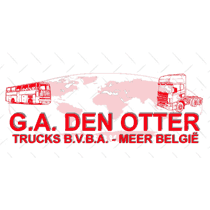Seller's country
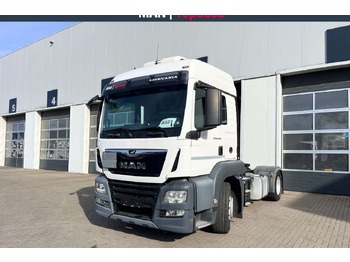
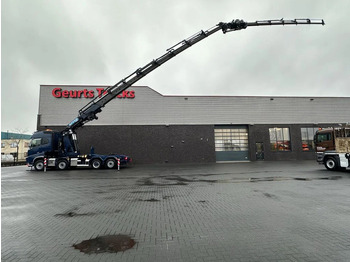

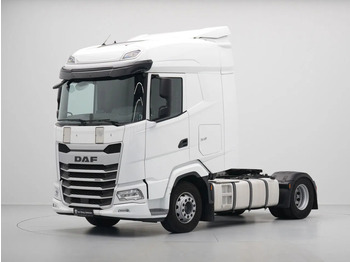
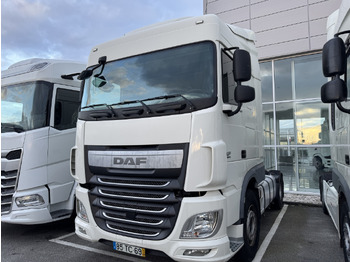


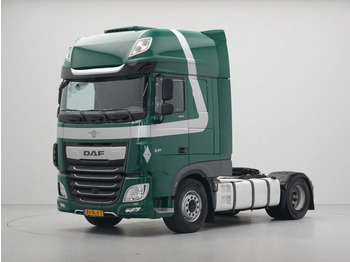
Tractor units represent the powerhouse component of articulated truck combinations, featuring robust chassis, powerful engines, and specialized coupling systems designed to pull semi-trailers across long-haul and regional freight operations. These sophisticated vehicles form the backbone of commercial transportation networks, enabling efficient cargo movement through standardized trailer combinations that maximize payload capacity while optimizing operational flexibility. Tractor unit operations serve diverse logistics markets including long-haul freight, regional distribution, intermodal transport, and specialized hauling where payload efficiency and operational reliability are paramount requirements. The tractor unit market encompasses configurations ranging from 4x2 units for highway efficiency to 6x4 heavy-duty systems capable of handling maximum gross combination weights. Modern tractor units integrate advanced drivetrain technologies, aerodynamic enhancements, and driver comfort systems that maximize fuel efficiency while ensuring operational productivity throughout demanding commercial applications. Companies evaluating tractor units for sale must consider payload requirements, operational environments, and economic efficiency factors that significantly impact vehicle selection and fleet profitability. Used tractor units for sale provide cost-effective alternatives for established operations while delivering proven performance and reliability essential for competitive freight operations in demanding commercial markets.
Drivetrain Configurations and Axle Arrangements
4x2 tractor units represent the most fuel-efficient configuration for highway operations, featuring single drive axles that minimize rolling resistance while providing adequate traction for standard freight applications. These units typically feature gross combination weights up to 40 tonnes with drive axle ratings of 11-13 tonnes, optimizing payload capacity while maintaining excellent fuel economy. 4x2 configurations excel in long-haul operations on improved roads where maximum fuel efficiency and payload optimization are primary operational requirements.
6x2 tractor units incorporate additional non-driven axles that increase payload capacity and improve load distribution while maintaining highway efficiency advantages over 6x4 configurations. These units typically feature gross combination weights up to 44 tonnes with the additional axle providing load distribution benefits and regulatory compliance in weight-sensitive applications. 6x2 configurations often include lift axles that can be raised during light-load operations to improve fuel efficiency and reduce tire wear.
6x4 tractor units provide maximum traction and payload capacity through dual drive axles capable of handling gross combination weights exceeding 60 tonnes in specialized applications. These configurations feature enhanced traction for challenging terrain, superior load distribution, and maximum payload capacity suitable for heavy-haul operations and demanding operational conditions. 6x4 units command premium pricing but provide essential capability for maximum weight operations and challenging terrain conditions.
Tag axle configurations utilize additional non-driven axles positioned behind the drive axles to increase payload capacity and improve load distribution without significantly impacting fuel efficiency. Tag axles can be lifted during light-load operations to optimize fuel consumption and tire wear while providing additional capacity when needed. These configurations provide operational flexibility and regulatory compliance advantages in weight-sensitive markets.
Specialized axle configurations include pusher axles, steerable tag axles, and multi-axle arrangements designed for extreme payload applications and specialized transport requirements. These configurations address specific operational needs including bridge law compliance, concentrated load distribution, and maximum payload optimization while maintaining operational efficiency and regulatory compliance throughout specialized transport applications.
Engine Technology and Performance Specifications
Modern tractor unit engines range from 350 to 700 horsepower with torque outputs spanning 1,400 to 3,500 Nm, providing power specifications matched to operational requirements from regional distribution to heavy-haul applications. Engine selection considers gross combination weight, operational terrain, duty cycle, and fuel efficiency requirements while balancing performance capability with operational economics. Advanced engines incorporate turbocharging, intercooling, and electronic management systems that optimize power delivery while meeting stringent emission standards.
Euro 6 emission compliance represents the current standard for new tractor units, incorporating advanced aftertreatment systems including selective catalytic reduction, diesel particulate filters, and exhaust gas recirculation that achieve near-zero emission levels. Euro 6 tractor units for sale command premium pricing but provide regulatory compliance, fuel efficiency advantages, and operational acceptance in environmentally sensitive markets. Emission compliance significantly impacts engine design, maintenance requirements, and operational procedures.
Fuel efficiency technologies include advanced combustion systems, waste heat recovery, variable valve timing, and intelligent power management that optimize fuel consumption throughout various operational conditions. Modern tractor units achieve fuel consumption rates of 25-35 liters per 100 kilometers depending on operational conditions, payload, and driving patterns. Fuel efficiency improvements of 15-25% compared to older units provide substantial operational cost savings that justify premium acquisition costs.
Engine downsizing trends utilize smaller displacement engines with enhanced power density through advanced turbocharging and combustion optimization that maintain performance while improving fuel efficiency and reducing weight. Downsized engines often provide superior torque characteristics, improved fuel economy, and reduced maintenance costs while maintaining adequate power for most commercial applications. Engine selection should balance power requirements with fuel efficiency and operational cost considerations.
Alternative fuel capabilities include compressed natural gas, liquefied natural gas, and hydrogen fuel cell technologies that address environmental concerns while maintaining operational capability. Alternative fuel tractor units require specialized infrastructure, modified operational procedures, and enhanced maintenance capabilities but provide environmental benefits and potential operational cost advantages in appropriate applications. Alternative fuel adoption depends on infrastructure availability and operational requirements.
Transmission Systems and Driveline Technology
Automated manual transmissions represent the predominant technology in modern tractor units, providing manual transmission efficiency with automatic operation that reduces driver fatigue while optimizing fuel consumption. AMT systems typically feature 12-16 forward speeds with electronic controls that automatically select optimal gear ratios based on load conditions, terrain, and operational requirements. Advanced systems incorporate predictive shifting, hill optimization, and fuel economy modes that maximize operational efficiency.
Manual transmissions remain popular in cost-sensitive applications and driver preference markets, offering direct driver control and reduced maintenance complexity while providing excellent fuel efficiency with skilled operation. Manual systems typically feature 9-13 forward speeds with synchronized shifting and range/splitter controls that enable precise gear selection for various operational conditions. Manual transmissions require skilled operators but provide maximum operational control and mechanical simplicity.
Automatic transmissions gain acceptance in urban and regional applications where frequent stops and driver comfort are prioritized over maximum fuel efficiency. Modern automatic systems feature 6-10 speeds with torque converter lockup and electronic controls that optimize shifting patterns for operational conditions. Automatic transmissions reduce driver training requirements and improve operational consistency but typically consume 3-8% more fuel than manual alternatives.
Retarder systems integrate with transmissions to provide enhanced braking capability through exhaust brakes, engine compression brakes, or hydraulic retarders that reduce service brake wear while improving operational safety. Retarder systems are essential for mountainous operations and heavy-haul applications where service brake capacity would be exceeded. Advanced retarder systems integrate with vehicle stability controls and automated braking systems for optimal performance.
Driveline efficiency optimization includes low-friction lubricants, optimized gear ratios, and advanced materials that minimize power losses throughout the drivetrain while maximizing fuel efficiency. Modern drivelines achieve efficiency levels exceeding 95% through precision manufacturing, advanced materials, and optimized design that reduces parasitic losses. Efficiency improvements translate directly to fuel savings and operational cost reduction throughout vehicle service life.
Aerodynamic Design and Fuel Efficiency Features
Aerodynamic optimization represents a critical factor in tractor unit design, with modern units achieving drag coefficients below 0.35 through integrated cab design, side fairings, and airflow management systems. Aerodynamic improvements provide fuel savings of 5-15% at highway speeds while maintaining operational functionality and driver comfort. Advanced aerodynamic features include active grille shutters, underbody panels, and integrated air management that optimize airflow throughout the vehicle combination.
Cab integration with aerodynamic systems creates seamless airflow from the tractor unit to trailer while maintaining driver visibility and operational functionality. Integrated designs feature sloped windshields, optimized A-pillar angles, and aerodynamic mirrors that reduce wind resistance while providing essential operational capabilities. Cab aerodynamics must balance fuel efficiency with driver comfort, visibility requirements, and operational functionality.
Side fairing systems manage airflow around and under the vehicle combination while protecting components and improving fuel efficiency. Adjustable fairings accommodate various trailer heights and configurations while maintaining aerodynamic benefits across different operational scenarios. Advanced fairing systems include active elements that adjust based on operational conditions and trailer configurations for optimal aerodynamic performance.
Trailer gap management through cab extenders, gap reducers, and aerodynamic devices minimizes turbulence between tractor and trailer while maintaining operational flexibility for various trailer types. Gap management systems can provide fuel savings of 2-5% while accommodating standard trailer configurations and operational requirements. Optimal gap management balances aerodynamic benefits with operational flexibility and regulatory compliance.
Active aerodynamic systems incorporate adjustable elements that adapt to operational conditions including speed, wind conditions, and trailer configurations for optimal fuel efficiency. Active systems include deployable panels, adjustable fairings, and variable geometry features that optimize aerodynamic performance across varying operational conditions. These advanced systems require sophisticated controls but provide maximum fuel efficiency benefits.
Driver Comfort and Operational Features
Modern tractor unit cabs prioritize driver comfort through spacious designs, ergonomic controls, and premium appointments that reduce fatigue while improving operational productivity during long-haul operations. Cab designs typically feature 1.9-2.1 meter interior heights with full-width sleeping areas, storage systems, and comfort amenities that enable efficient rest periods and improved driver satisfaction. Advanced cabs include air suspension, noise insulation, and climate control systems that optimize driver comfort throughout demanding operational schedules.
Sleeping and rest facilities incorporate comfortable berths, storage systems, and privacy features designed for mandatory rest periods and long-haul operations. Sleeping areas typically feature high-quality mattresses, reading lights, personal storage, and electrical outlets that provide home-like comfort during extended trips. Advanced rest facilities include entertainment systems, communication capabilities, and comfort amenities that improve driver satisfaction and retention.
Ergonomic design principles optimize control placement, seat adjustment, and operational interfaces that reduce driver fatigue while improving operational safety and efficiency. Ergonomic features include adjustable steering columns, intuitive control placement, and comprehensive seat adjustment that accommodate various driver sizes and preferences. Advanced ergonomic systems include memory settings, automatic adjustments, and personalized configurations that optimize comfort for individual operators.
Technology integration includes navigation systems, communication platforms, fleet management interfaces, and entertainment systems that enhance operational capability while providing driver amenities. Integrated systems feature touchscreen displays, voice controls, and smartphone connectivity that enable efficient operation while maintaining driver focus on operational tasks. Advanced integration includes artificial intelligence, predictive maintenance, and automated reporting that optimize operational efficiency.
Safety systems incorporate collision avoidance, lane departure warning, driver monitoring, and emergency braking that enhance operational safety while protecting valuable assets and cargo. Advanced safety systems use radar, cameras, and sensors to monitor operational conditions and provide automated interventions when hazardous conditions are detected. Safety system integration requires driver training and operational procedures that maximize effectiveness while maintaining operational efficiency.
Economic Analysis and Operational Considerations
Tractor unit acquisition costs vary significantly based on specifications, features, and market conditions, with new units ranging from ₹35-80 lakhs depending on power, features, and manufacturer. Used tractor units for sale provide cost-effective alternatives at 40-70% of new vehicle costs depending on age, mileage, and condition. Investment analysis should consider total cost of ownership including fuel consumption, maintenance costs, driver productivity, and resale value when evaluating acquisition options.
Fuel cost analysis represents the largest operational expense for tractor unit operations, typically accounting for 25-35% of total operating costs depending on utilization and fuel prices. Fuel efficiency improvements of 2-3% can provide annual savings of ₹50,000-150,000 per vehicle depending on annual mileage and operational patterns. Fuel efficiency considerations should weigh acquisition cost premiums against operational savings throughout vehicle service life.
Maintenance cost planning encompasses routine servicing, component replacement, and major overhauls that maintain operational reliability while controlling costs. Annual maintenance costs typically range from 8-15% of initial purchase price depending on utilization, operational conditions, and maintenance quality. Preventive maintenance programs, quality service providers, and genuine parts utilization significantly impact maintenance costs and operational reliability throughout vehicle service life.
Driver productivity factors include comfort features, operational capabilities, and technology systems that attract and retain qualified drivers while maximizing operational efficiency. Driver satisfaction directly impacts retention rates, operational costs, and service quality throughout competitive freight markets. Investment in driver comfort and operational features often provides returns through reduced turnover, improved productivity, and enhanced operational capability.
Resale value considerations include market demand, technological currency, maintenance condition, and mileage accumulation that influence future value and fleet replacement strategies. Well-maintained tractor units from established manufacturers typically retain 30-45% of original value after five years depending on market conditions and vehicle condition. Resale planning should consider technological obsolescence, regulatory changes, and market trends that impact future vehicle values and replacement timing.
What factors determine tractor unit pricing in the current market?
Tractor unit prices vary based on engine power (350-700 HP), axle configuration (4x2, 6x2, 6x4), emission standards (Euro 6), transmission type, and features. New units range ₹35-80 lakhs depending on specifications. Factors include manufacturer reputation, fuel efficiency technology, driver comfort features, and warranty coverage. Used tractor units cost 40-70% less but require condition assessment and remaining service life evaluation.
How do I choose between 4x2, 6x2, and 6x4 tractor unit configurations?
4x2 units provide maximum fuel efficiency for highway operations with gross combination weights up to 40 tonnes. 6x2 configurations offer increased payload capacity (up to 44 tonnes) with lift axles for efficiency optimization. 6x4 units provide maximum traction and payload capacity (60+ tonnes) for heavy-haul operations. Selection depends on typical payload requirements, operational terrain, and efficiency priorities.
What are the main advantages of Euro 6 tractor units over older emission standards?
Euro 6 tractor units provide regulatory compliance, improved fuel efficiency (5-10% better), reduced maintenance costs, enhanced resale values, and operational acceptance in environmentally sensitive areas. Benefits include advanced engine technology, optimized performance, and future regulatory compliance. However, Euro 6 units cost 15-25% more initially and require specialized maintenance and quality fuel for optimal performance.
Are there specific licensing requirements for tractor unit operations?
Tractor unit operations require commercial driving licenses with articulated vehicle endorsements appropriate for gross combination weight. Training should cover coupling procedures, trailer handling, weight distribution, and safety systems. Some jurisdictions require periodic recertification and specialized endorsements for hazardous materials or oversized loads. Professional driver training significantly impacts operational safety and efficiency.
What maintenance is critical for tractor unit reliability and longevity?
Critical maintenance includes engine service every 40,000-60,000 km, transmission service every 100,000-150,000 km, differential service every 80,000-120,000 km, and emission system maintenance per manufacturer schedules. Fifth wheel lubrication, air system maintenance, and suspension service are essential. Preventive maintenance programs, quality lubricants, and genuine parts significantly impact reliability and operating costs.
How do operating costs compare between new and used tractor units?
New tractor units provide warranty coverage, optimal fuel efficiency, and predictable maintenance costs but require higher initial investment. Used units offer acquisition savings of 30-60% but may have higher maintenance costs, reduced fuel efficiency, and shorter remaining service life. Consider total cost of ownership including acquisition, fuel, maintenance, downtime, and resale value when comparing options.
What fuel efficiency improvements can modern tractor units achieve?
Modern tractor units achieve 15-25% better fuel efficiency than units over 10 years old through advanced engines, aerodynamic design, and optimized drivetrains. Typical consumption ranges from 25-35 liters per 100 km depending on application. Efficiency improvements include automated transmissions, aerodynamic features, and advanced engine technology. Fuel savings often justify premium acquisition costs within 2-4 years.
Can tractor units handle different trailer types and configurations?
Tractor units accommodate various trailer types through standardized fifth wheel coupling, electrical connections, and air brake systems. Standard units handle flatbeds, box trailers, tankers, and specialized trailers within weight limits. Specialized applications may require enhanced electrical systems, specialized coupling equipment, or additional axles. Verify compatibility requirements for specific trailer applications and operational needs.
What driver comfort features should I prioritize for long-haul operations?
Essential comfort features include air-suspended seats, spacious cabs with full sleeping facilities, climate control, noise insulation, and ergonomic controls. Advanced features include integrated entertainment, navigation systems, and communication platforms. Driver comfort directly impacts retention, productivity, and operational safety. Investment in comfort features typically provides returns through reduced driver turnover and improved operational efficiency.
How long do tractor units typically last in commercial service?
Well-maintained tractor units achieve 15-20 years of commercial service or 1,500,000-2,000,000 kilometers depending on application intensity and maintenance quality. Long-haul operations typically achieve higher mileage than regional applications. Major overhauls may be required at 800,000-1,200,000 km intervals. Proper maintenance, quality operation, and appropriate application matching significantly impact longevity and total cost of ownership throughout service life.

